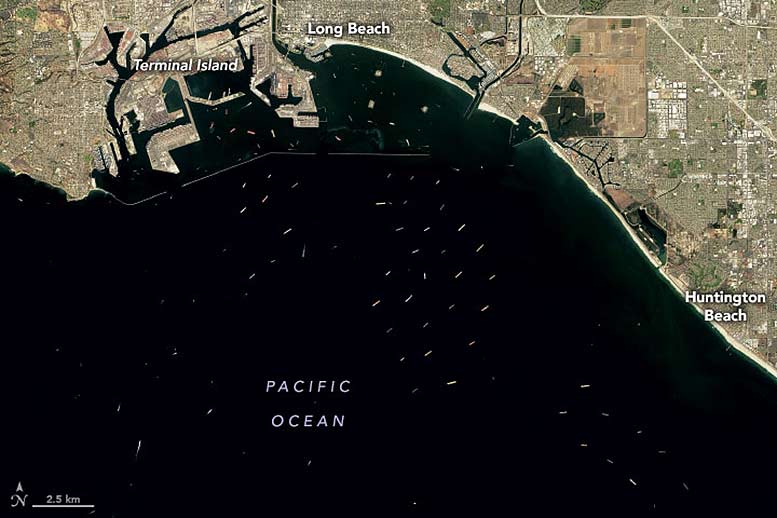Global Supply Chain Disruption Visible From NASA Satellites
0 View
Share this Video
- Publish Date:
- 16 October, 2021
- Category:
- Covid
- Video License
- Standard License
- Imported From:
- Youtube
Tags

October 10, 2021
The pandemic has disrupted global supply chains and markets to the extent that it has led to freighter backlogs in key ports.
Growing demand for consumer goods and goods, labor shortages, inclement weather and a range of COVID-related supply chains are leading to freighter backlogs in ports around the world.
Those seaports include the Port of Los Angeles and the Port of Long Beach in Southern California, the two busiest container ports in the United States. On October 10, 2021, the Operational Land Imager (OLI) on Landsat 8 captured this natural-color image of dozens of cargo ships waiting offshore for their turn to unload goods. On the same day, the Advanced Spaceborne Thermal Emission and Reflection Radiometer (ASTER) on NASA’s Terra satellite acquired similar images (below).
On October 10, 2021, NASA’s Advanced Spaceborne Thermal Emission and Reflection Radiometer (ASTER) instrument captured an image of more than 70 ships waiting to dock and unload in the ports of Los Angeles and Long Beach, due to a crisis in the ocean. supply chain. The image covers an area of 14 by 16 miles (23 by 25 kilometers). Credit: NASA/JPL-Caltech
According to data released by the Marine Exchange of Southern California, there were 87 container ships near the two ports that day. Twenty-seven ships were in their berths and 60 waited (anchored or floating in drift zones) off the coast. The number of waiting ships had fallen from a record high of 73 on September 19, 2021. The two ports have had an unusually high number of waiting ships since June 2020. Before that, freighters rarely waited to unload.
Ship backlogs in ports are not limited to Los Angeles. Elsewhere in the United States, ports in New York, New Jersey, Georgia and Texas have faced similar challenges, according to news reports. Meanwhile, more than 67 container ships are waiting in the Chinese port of Yantian in Shenzhen, partly because the tropical cyclone Kompasu has temporarily closed the port. Ports in Malaysia, Singapore, Hong Kong and Shanghai all had 10 or more container ships ready by mid-October, Bloomberg said.
NASA-funded researchers have used satellites and other tools to track various ways in which the COVID-19 pandemic has changed aspects of human activity and its impact on the environment. Researchers have tracked indicators ranging from air pollution and nighttime light activity and shipping. In particular, the Interagency Implementation and Advanced Concepts Team (IMPACT) at NASA’s Marshall Space Flight Center has used artificial intelligence technology and high-resolution satellite imagery to monitor shipping activity in major US ports.
NASA Earth Observatory image by Joshua Stevens, using Landsat data from the US Geological Survey.










